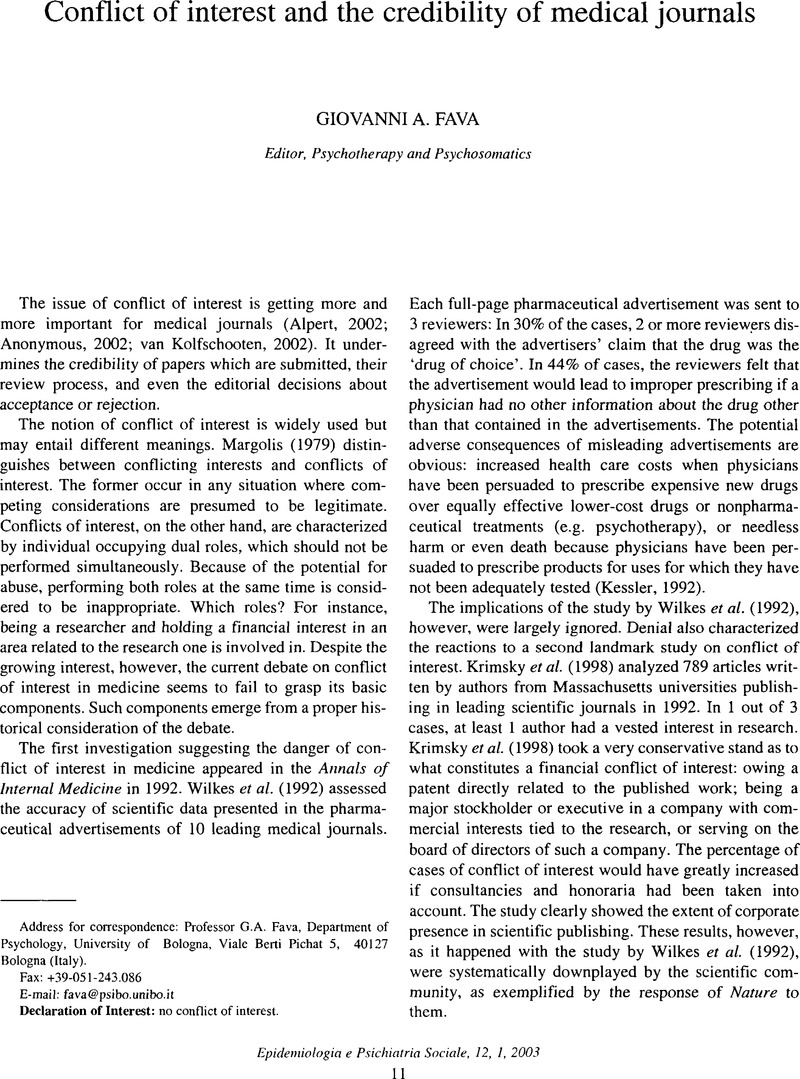Crossref Citations
This article has been cited by the following publications. This list is generated based on data provided by Crossref.
Perlis, Roy H.
Perlis, Clifford S.
Wu, Yelena
Hwang, Cindy
Joseph, Megan
and
Nierenberg, Andrew A.
2005.
Industry Sponsorship and Financial Conflict of Interest in the Reporting of Clinical Trials in Psychiatry.
American Journal of Psychiatry,
Vol. 162,
Issue. 10,
p.
1957.
Pariante, Carmine M.
2010.
The many lives of an (associate) editor.
Epidemiologia e Psichiatria Sociale,
Vol. 19,
Issue. 3,
p.
200.



